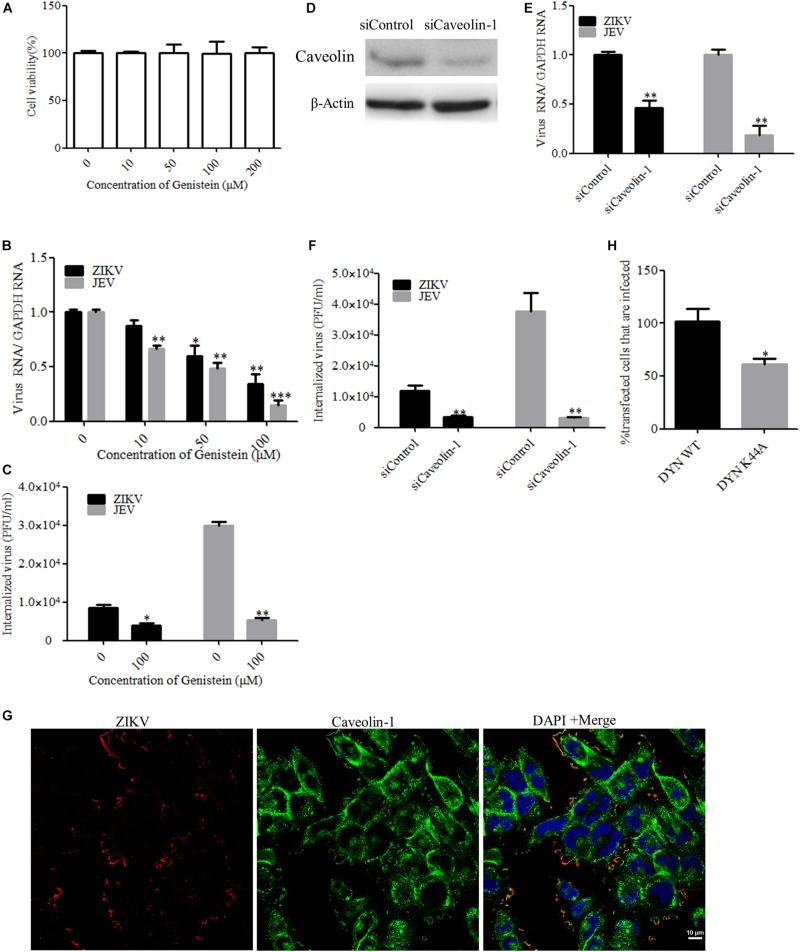FIGURE 4.
Zika virus (ZIKV) enters T98G cells via a caveola-mediated endocytosis pathway. (A) Cell viability upon genistein treatment was assessed by the MTT assay. (B,C) Treatment with genistein inhibited ZIKV entry. T98G cells were pretreated with increasing concentrations of genistein for 1 h at 37°C, followed by infection with ZIKV or Japanese encephalitis virus (JEV) at an MOI of 10, with the drug being maintained during the adsorption period of 1 h at 37°C. The internalized viruses were determined by RT-qPCR (B) and infectious center assay (C). (D) To verify caveolin-1 knockdown, protein samples from the cells expressing each siRNA construct were analyzed by immunoblotting for caveolin-1. (E,F) T98G cells were transfected with siRNA targeting caveolin-1 protein or control siRNA for 48 h, followed by infection with ZIKV or JEV. The internalized viruses were determined by RT-qPCR (E) and infectious center assay (F). (G) Colocalization of caveolin-1 with ZIKV during the early stage of infection. Cells grown on glass coverslips in six-well plates were infected with ZIKV at 4°C for 1 h and then shifted to 37°C for 5 min. The cells were then fixed with 4% paraformaldehyde, stained with mouse anti-ZIKV E antibody (red) and rabbit anti-caveolin-1 (green), and examined by confocal microscopy. Scale bars in all panels represent 10 μm. (H) The inhibitory effect of caveolin-1 dominant-negative construct on ZIKV infection was determined by flow cytometry. One representative experiment out of three is shown (D). Representative confocal images from three independent experiments are shown (G). The data shown are the mean ± SD of three independent experiments (A–C,E,F,H). *P < 0.05; **P < 0.01; ***P < 0.001.

